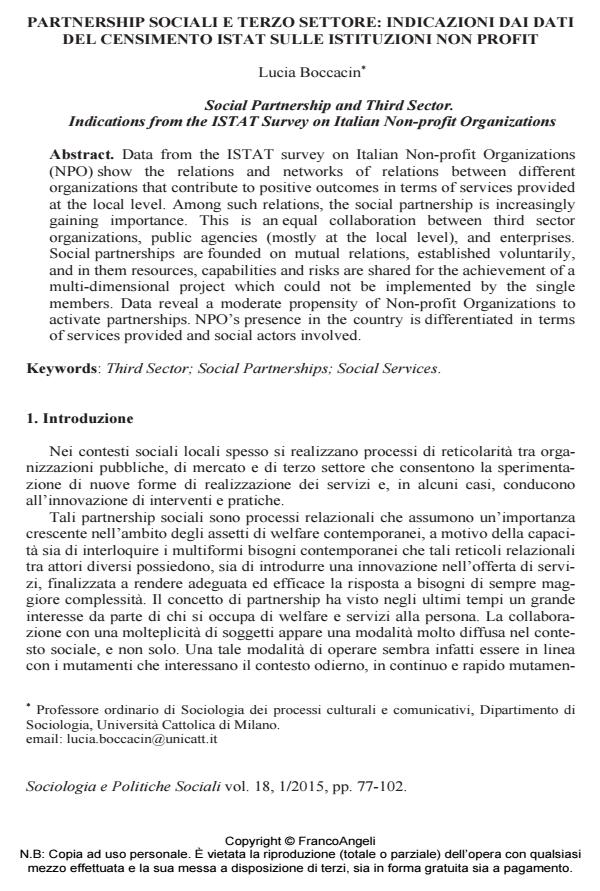Social Partnership and Third Sector. Indications from the ISTAT Survey on Italian Non-profit Organizations
Journal title SOCIOLOGIA E POLITICHE SOCIALI
Author/s Lucia Boccacin
Publishing Year 2015 Issue 2015/1
Language Italian Pages 26 P. 77-102 File size 209 KB
DOI 10.3280/SP2015-001005
DOI is like a bar code for intellectual property: to have more infomation
click here
Below, you can see the article first page
If you want to buy this article in PDF format, you can do it, following the instructions to buy download credits

FrancoAngeli is member of Publishers International Linking Association, Inc (PILA), a not-for-profit association which run the CrossRef service enabling links to and from online scholarly content.
Data from the ISTAT survey on Italian Non-profit Organizations (NPO) show the relations and networks of relations between different organizations that contribute to positive outcomes in terms of services provided at the local level. Among such relations, the social partnership is increasingly gaining importance. This is an equal collaboration between third sector organizations, public agencies (mostly at the local level), and enterprises. Social partnerships are founded on mutual relations, established voluntarily, and in them resources, capabilities and risks are shared for the achievement of a multi-dimensional project which could not be implemented by the single members. Data reveal a moderate propensity of Non-profit Organizations to activate partnerships. NPO’s presence in the country is differentiated in terms of services provided and social actors involved.
Keywords: Third Sector; Social Partnerships; Social Services
Lucia Boccacin, Partnership sociali e terzo settore: indicazioni dai dati del censimento istat sulle istituzioni non profit in "SOCIOLOGIA E POLITICHE SOCIALI" 1/2015, pp 77-102, DOI: 10.3280/SP2015-001005